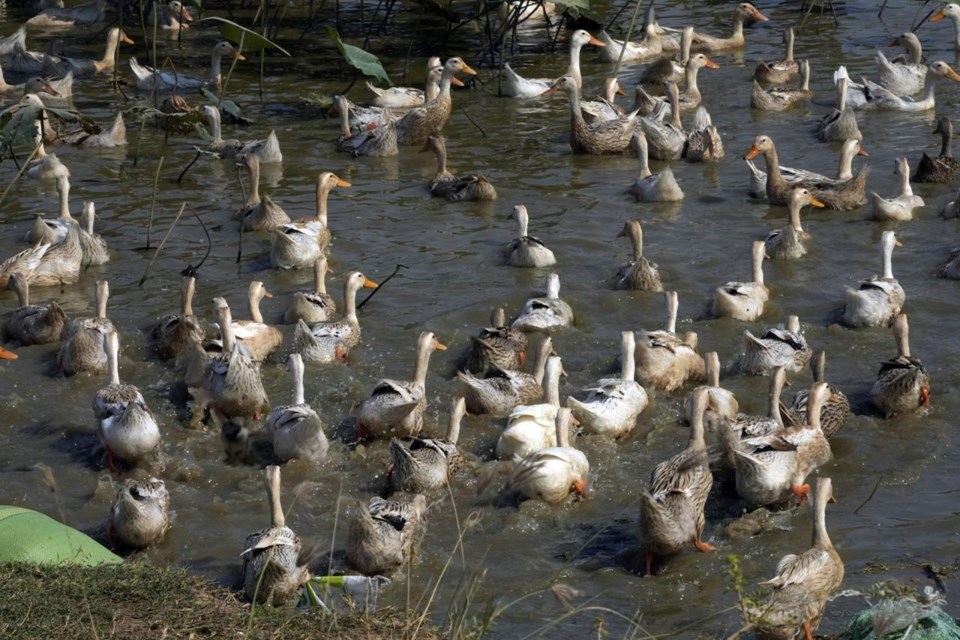PHNOM PENH, Cambodia (AP) — An 11-year-old girl in Cambodia has died from bird flu in the country's first known human H5N1 infection since 2014, health officials said.
Bird flu, also known as avian influenza, normally spreads in poultry and wasn’t deemed a threat to people until a 1997 outbreak among visitors to live poultry markets in Hong Kong. Most human cases worldwide have involved direct contact with infected poultry, but concerns have arisen recently about infections in a variety of mammals and the possibility the virus could evolve to spread more easily between people.
The girl from the rural southeastern province of Prey Veng became ill Feb. 16 and was sent to be treated at hospital in the capital, Phnom Penh. She was diagnosed Wednesday after suffering a fever up to 39 Celsius (102 Fahrenheit) with coughing and throat pain and died shortly afterward, the Health Ministry said in a statement Wednesday night.
Health officials have taken samples from a dead wild bird at a conservation area near the girl's home, the ministry said in another statement Thursday. It said teams in the area would also warn residents about touching dead and sick birds.
Cambodian Health Minister Mam Bunheng warned that bird flu poses an especially high risk to children who may be feeding or collecting eggs from domesticated poultry, playing with the birds or cleaning their cages.
Symptoms of H5N1 infection are similar to that of other flus, including cough, aches and fever, and in serious cases, patients can develop life-threatening pneumonia.
Cambodia had 56 human cases of H5N1 from 2003 through 2014 and 37 of them were fatal, according to the World Health Organization.
Globally, about 870 human infections and 457 deaths have been reported to the WHO in 21 countries. But the pace has slowed, and there have been about 170 infections and 50 deaths in the last seven years.
WHO Director-General Tedros Adhanom Ghebreyesus earlier this month expressed concern about avian influenza infections in mammals including minks, otters, foxes and sea lions.
“H5N1 has spread widely in wild birds and poultry for 25 years, but the recent spillover to mammals needs to be monitored closely,” he warned.
In January, a 9-year-old girl in Ecuador became the first reported case of human infection in Latin America and the Caribbean. She was treated with antiviral medicine.
Tedros said earlier this month that the WHO still assesses the risk from bird flu to humans as low.
“But we cannot assume that will remain the case, and we must prepare for any change in the status quo,” he said. He advised for people not to touch dead or sick wild animals and for countries to strengthen their surveillance of settings where people and animals interact.
Sopheng Cheang, The Associated Press



